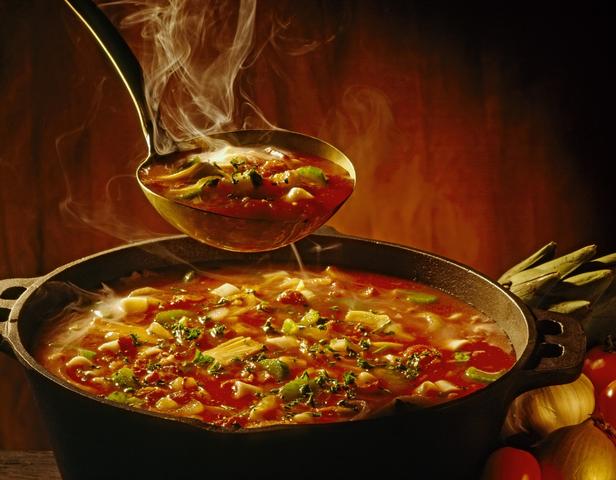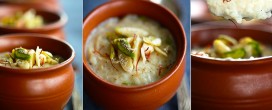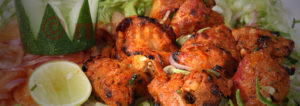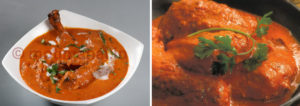crisp and hazy weather, chilling temperature, chilled mornings and long nights embark the arrival of the beautiful winter season. It is this time of the year when you take out thick blankets, mufflers, shawls and woolen wear to keep yourself warm.
Winter is also the time when you eat very often, but why? Body temperature drops due to the cold weather and your body has to spend more energy to warm it hence your appetite rises. Also one looses energy rapidly when you do physical activities. Frequent hunger pangs in winter is natural but what is important is to keep a tab on what you eat and how much, else, it can create problems with digestion, as digestion generally, slows down in winters.
When the cold winter wind blows through the trees and the ground freezes hard as a rock, nothing warms a body faster than hearty comfort food. Soups and stews are favorites during the snowy time of year, as are braised dishes and roasted meats and vegetables. And holiday feasting has its own place among mid-winter dining pleasures.
As I mentioned previously, it is very important to keep yourself warm in winter and it is really easy to do so. Just add these foods to your daily diet and you’ll be able to enjoy your winter to the fullest:
Til (sesame seeds): Both black and white til have been known to provide heat to the body after digestion. That is exactly why til gajjak, rewari, til laddus are standard winter groceries.
Garlic: Garlic not only makes food tasty but also help to prevent many medical problems. Allicin which a compound found in garlic helps in building strong body resistance to fight winter cold and flu. It also aids in digestion and lowers bad cholesterol. Weather eaten ear or cooked, garlic is beneficial in any form. Crushing garlic before consuming it which is normally done is not suggested as it releases allicin, which gives garlic antioxidant properties. So now that you know so much about this little so useful garlic, you can enjoy it in your soups, in your curries and also put in on the rotis to make it more delicious and healthy.
Ginger: The goodness of ginger just cannot be ignored. Winter is the perfect time to take the advantage of the medicinal properties of ginger. Ginger not only keeps the body warm but also helps in speeding up body metabolism. A hot cup of ginger tea is the best way to fight the winter chills. It can also be used while cooking, in curries and while making salads. As ginger acts as an antioxidant, it is used as an excellent remedy against cold and flu, when taken with honey it an excellent remedy to fight cold and flu. Ginger also helps you to build a strong immune system, so don’t forget to add small quantity of ginger in your diet.
Other WARMERS –
Cinnamon: Pulaos and Biryanis taste awesome when you add cinnamon sticks to them
Onion: Have it as a hot French onion soup or add it to curries.
Cumin seeds: Add it to flavor green veggies or simply garnish the rotis with it.
Pepper: It is excellent for asthmatics; you can simply sprinkle some on your breakfast omelette.
Clove: A great mouth freshener and it is also known for its antiseptic abilities.
Fennel: Really good for the stomach and can be used as a digestive after meals.
Fenugreek: Have 1 teaspoon pre-soaked methi seeds early morning; really good for diabetes.
Pumpkin seeds: Have it with sauté channa or murmura with a dash of oil. Also, tarbooz seeds go well with tea.
Millets: Bajra, jowar rotis with green saags; simply delicious! (makki ki roti with sarson ka sag was invented for a reason for winter season). However, people with gas and flatulent tendency should go easy on it.
Peanuts: poor mans almonds -we all love it! But because it is very gaseous, avoid over consumption.
Honey: You should switch to this natural sweetener; great complexion is an added bonus.
Saffron: Add it to your milk or pulaos. The rich taste will get you hooked!
Dry Fruits:
Almonds, pistas, raisins, dried anjeer and cashews can be great sources of energy during winters. You can easily find these in Indian markets. They are loaded with vitamins, minerals and can also satisfy hunger for a long period of time. You can carry them while travelling or eat them as a quick snack. These will not only warm you up but will also induce a good sleep. But remember not to go overboard with dry fruits, else, too much would make them heavy to digest
Go Green: Vegetables and fruits are the most essential part of your diet. In winter as the body metabolism is low it is advisable to have fruits and vegetables which are low in calories and are nutrient dense in nature. Winter season offers a wide choice in vegetables and fruits. Vegetables like methi, palak, cabbage, sweet potatoes, beetroot, and ladyfingers are all available in winter. You can also enjoy a variety of fruits like grapes, pineapples, chiku, apples and oranges.
Hot Soups: You are back home from outside and very hungry. What can be a better appetizer than a bowl of hot soup? Even simple tomato or chicken soup will be enough to keep you full until your meal. Soups not only give you nutrients but are also low in calories , should you choose to avoid butter and cream in your hot bowl of soup.
Foods which have to be avoided:
Maida, white-bread sandwiches, processed chips, aerated drinks, curd, raita, cold coffee, cucumber, alcohol, rice at night, too much butter and ghee and cold water after meals.
Lastly, avoid overeating at night as it overloads your metabolism and diminishes the digestive fire. There are a myriad of recipes online, which can be printed out and can be made in winter months. Perhaps you have your own recipes handed down from generation to generation. Treat the whole family to these exquisite meals that are not only healthy but are guaranteed to make you feel warm all over.
Some winter recipes – just eat and enjoy-
Bon Appétit










